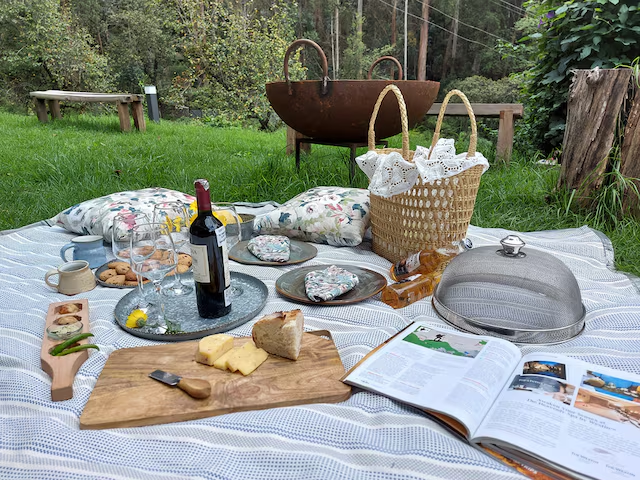A Trip Through Time: Examining Five Historic Houses
Let’s explore the enduring appeal of heritage houses by taking a tour through their charming and historical hallways, where each one reveals a different tale from the past. Saffronstays offers a variety of historic properties. From charming cottages tucked away in bucolic settings to grand manors radiating architectural magnificence, these historic homes serve as living reminders of bygone times and beckon us to discover the rich fabric of our common past.

Kannur and Amaya
Situated in Kannur, Kerala, the Kallur Illam is a historic estate that has endured for more than three centuries. The Malayalam term for the home of a Namboodiri Brahmin, or traditional feudal nobility, is illam (also called mana). This island’s history is mainly the history of Northern Malabar’s Tangals.
The Tangals of Northern Malabar’s Tharavad, or ancestral house, were the one that battled against Tipu Sultan’s campaign of conquest and preserved regional customs and culture. The estate was formerly a 50-acre property with a number of structures on it, such as a blacksmith forge, a temple, a horse stable, a kalarippayattu school, barracks, and homes. After purchasing the five-bedroom historic estate from the previous Tangal in 1990, the owners made the decision to bring it back to its former splendor.
Using traditional carpenters and masons from near and far, the Illam has been painstakingly restored. Modern comfort and design features have been introduced without dominating the stunning Malabar architecture. The house has an outside court called Kalari, an inside courtyard called Nadumuttam, a massage room, a sitting space called Mandapam, and even a pond called Kulam. A trip to SaffronStays Amaya in Kannur needs to be on your bucket list if you like architecture and history.
Stays Amolee, Alibaug Saffron
More than 2200 years ago, the Bene Israelis escaped from Israel and arrived in India, where they were shipwrecked at Nagaon, a little fishing hamlet on the Konkan coast of Maharashtra. They moved to Alibaug and asked the Koli people there for assistance. This resulted in an intriguing historical occurrence and a smooth blending of cultures, creating a distinctive hybrid society.
This Wada, which is clearly over 200 years old and was constructed in 1830, has been lovingly brought back to its former splendor. Since metal was not often utilized in home construction at the time this four-bedroom house was created, Burmese teak wood, limestone, and bricks were used instead, giving the building exceptional strength and longevity. Since purchasing the house in 1982, the present owners have lived there with their family.
As one of the oldest homes in Sagaon, it is a familiar sight to all the Jews in the area. This estate hosted several Jewish celebrations prior to undergoing renovations and restoration. The top floor’s mangalorean roof tiles are still exactly how they were a century ago. The many floor-to-ceiling windows throughout the home contribute to its exquisite construction and excellent ventilation. Warm white paint has been applied to the house’s exterior to accentuate the hand-polished door and window frames. To maintain the Sagwan wood’s appearance over time, the finest wood polish has been used to polish these frames and doors.
A local carpenter used Bagwan wood, often known as Burma teak, to make all of the furniture. The upholstery is beautifully colored in teal and turquoise, and the blinds are royal golden tones that give the house a charming old-world elegance. Every light fixture in the house is brass and antique.
We’ll take you back in time when you notice the antique, ancient telephone in the top lounge area, which is evocative of a bygone period. Another piece of history may be seen if you go around the backyard: a stone well that, a century ago, was said to be the sole water supply in the whole hamlet. Many people believe that the well’s pristine water is still drinkable. This need to be on your list if you like a superb historical villa!
At Calamondinn Bungalow, Coorg, Saffron stays
Situated in Gonikoppa, southern Coorg, and adjoining the Nagarhole Tiger Reserve, this estate is a 6,000-square-foot colonial house surrounded by limitless woods and coffee plantations.
Charles Edmund Waring constructed the five-bedroom house when it was first constructed in the 1890s. Built to appreciate the grandeur of Coorg while cultivating on the neighboring area, Charles was a hunter and farmer. After purchasing the house from Charles’s descendants, the owner and his family meticulously preserved and refurbished it to preserve its vintage beauty. The furnishings and décor of the property include elements of colonial, Victorian rococo, and Lutyen design. The house honors its original owner and is furnished with a number of antiques.
The Victorian-style residence has several paintings throughout, elaborate chandeliers, a grandfather clock, phonograph, and wooden-framed mirrors. The appeal of a vintage property such as this one must be preserved via repair work. The owners of SaffronStays Calamondinn Bungalow make timely maintenance checks, such as replacing the roof during the monsoon season, lacquering furniture occasionally, making sure the wall color scheme doesn’t change, and more, to make sure this historic house is kept in good condition and welcomes visitors.
Manor Parsi, Matheran
Saffron Remains Parsi Manor, a conventional 19th-century colonial house from Matheran’s hill stations, was once owned by a Parsi family. The present owner has ensured a rich history is maintained for all time with the latest renovation. There is a noticeable Parsi cultural influence in the four-bedroom classic home.
This 130-year-old Parsi-owned cottage has an old world appeal with its ancient honeycomb tiles, precious curiosities, and earthy furnishings. The house also has a cabinet honoring the home owner’s relative’s humanitarian efforts in Yazd.
The Dunnottar in Kodaikanal, By Kodai Lake
Tucked away by the peaceful lake in Kodaikanal, the house is a tribute to rich history and enduring beauty. This magnificent five-bedroom boutique home, steeped in history dating back to the 1890s, has undergone painstaking renovation, retaining its beauty while embracing contemporary conveniences. The house was originally held by American missionaries in the early 1900s, then by Scottish immigrant Lord Chamberlain in the 1930s. The Puliyadi family purchased the house in 1947, and their heritage is entwined with this exceptional property. Every room carries back memories of the 1960s, taking guests back to that period via tiny-format photos of the family shot in the home.
A break from traditional luxury is embodied by the bungalow, which includes SaffronStays Dunnottar North By Kodai Lake and SaffronStays Dunnottar South By Kodai Lake. Experience Kodai at its finest by boating, riding around the lake, and savoring wood-fired pizzas on the terrace.






